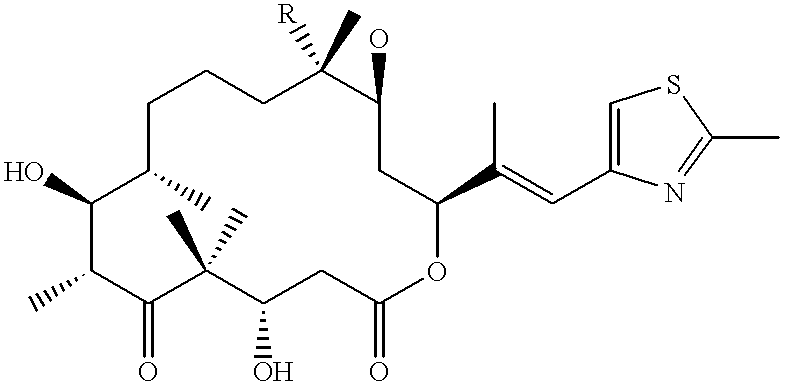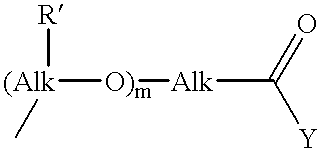Fermentative preparation process for and crystal forms of cytostatics
a preparation process and crystal technology, applied in chemical/physical processes, peptides, drug compositions, etc., can solve the problems of not being able to represent a really great breakthrough in the chemotherapy of cancer, the solubility of cytostatics is poor, and the effect of taxol can be impaired and even completely neutralised by acquired resistance mechanisms
- Summary
- Abstract
- Description
- Claims
- Application Information
AI Technical Summary
Problems solved by technology
Method used
Image
Examples
example 2
Cultivation in Order to Produce the Epothilones
Strain: Sorangium cellulosum Soce-90 BCE 33 / 10
example 1
Preservation of the Strain: In liquid N.sub.2, as in Example 1.
1B12 medium:
Addition of Cyclodextrins and Cyclodextrin Derivatives:
Cyclodextrins (Fluka, Buchs, Switzerland, or Wacker Chemie, Munich, Germany) in different concentrations are sterilised separately and added to the 1B12 medium prior to seeding.
Cultivation: 1 ml of the suspension of Sorangium cellulosum Soce-90 BCE 33 / 10 from a liquid N.sub.2 ampoule is transferred to 10 ml of G52 medium (in a 50 ml Erlenmeyer flask) and incubated for 3 days at 180 rpm in an agitator at 30.degree. C., 25 mm displacement. 5 ml of this culture is added to 45 ml of G52 medium (in a 200 ml Erlenmeyer flask) and incubated for 3 days at 180 rpm in an agitator at 30.degree. C., 25 mm displacement. 50 ml of this culture is then added to 450 ml of G52 medium (in a 2 litre Erlenmeyer flask) and incubated for 3 days at 180 rpm in an agitator at 30.degree. C., 50 mm displacement.
Maintenance culture: The culture is overseeded every 3-4 days, by adding...
example 2a
Effect of the Addition of Cyclodextrin and Cyclodextrin Derivatives to the Epothilone Concentrations Attained.
All the cyclodextrin derivatives tested here come from the company Fluka, Buchs, CH. The tests are carried out in 200 ml agitating flasks with 50 ml culture volume. As controls, flasks with adsorber resin Amberlite XAD-16 (Rohm & Haas, Frankfurt, Germany) and without any adsorber addition are used. After incubation for 5 days, the following epothilone titres can be determined by HPLC:
PUM
| Property | Measurement | Unit |
|---|---|---|
| melting point | aaaaa | aaaaa |
| melting point | aaaaa | aaaaa |
| melting point | aaaaa | aaaaa |
Abstract
Description
Claims
Application Information
 Login to View More
Login to View More - R&D
- Intellectual Property
- Life Sciences
- Materials
- Tech Scout
- Unparalleled Data Quality
- Higher Quality Content
- 60% Fewer Hallucinations
Browse by: Latest US Patents, China's latest patents, Technical Efficacy Thesaurus, Application Domain, Technology Topic, Popular Technical Reports.
© 2025 PatSnap. All rights reserved.Legal|Privacy policy|Modern Slavery Act Transparency Statement|Sitemap|About US| Contact US: help@patsnap.com



